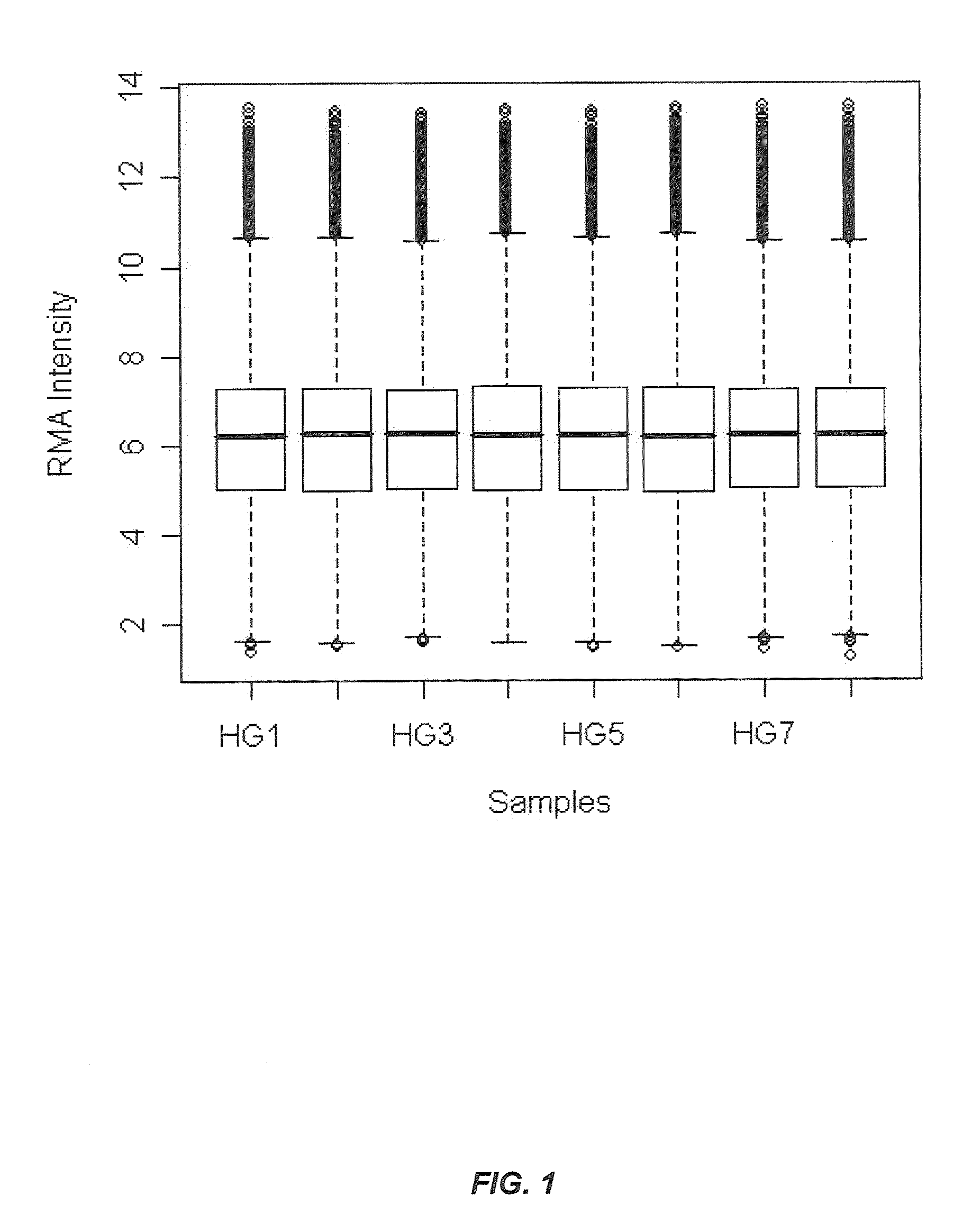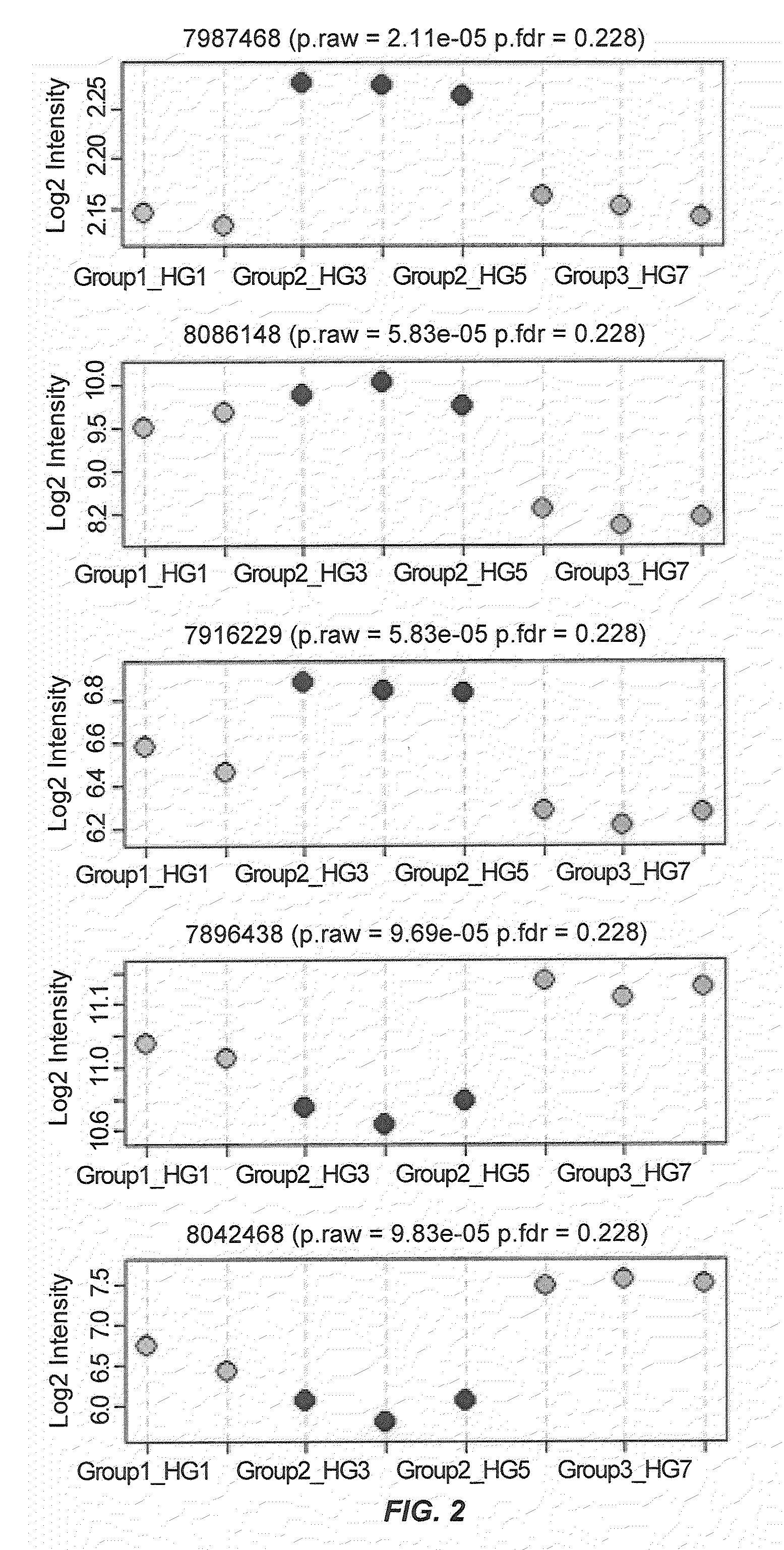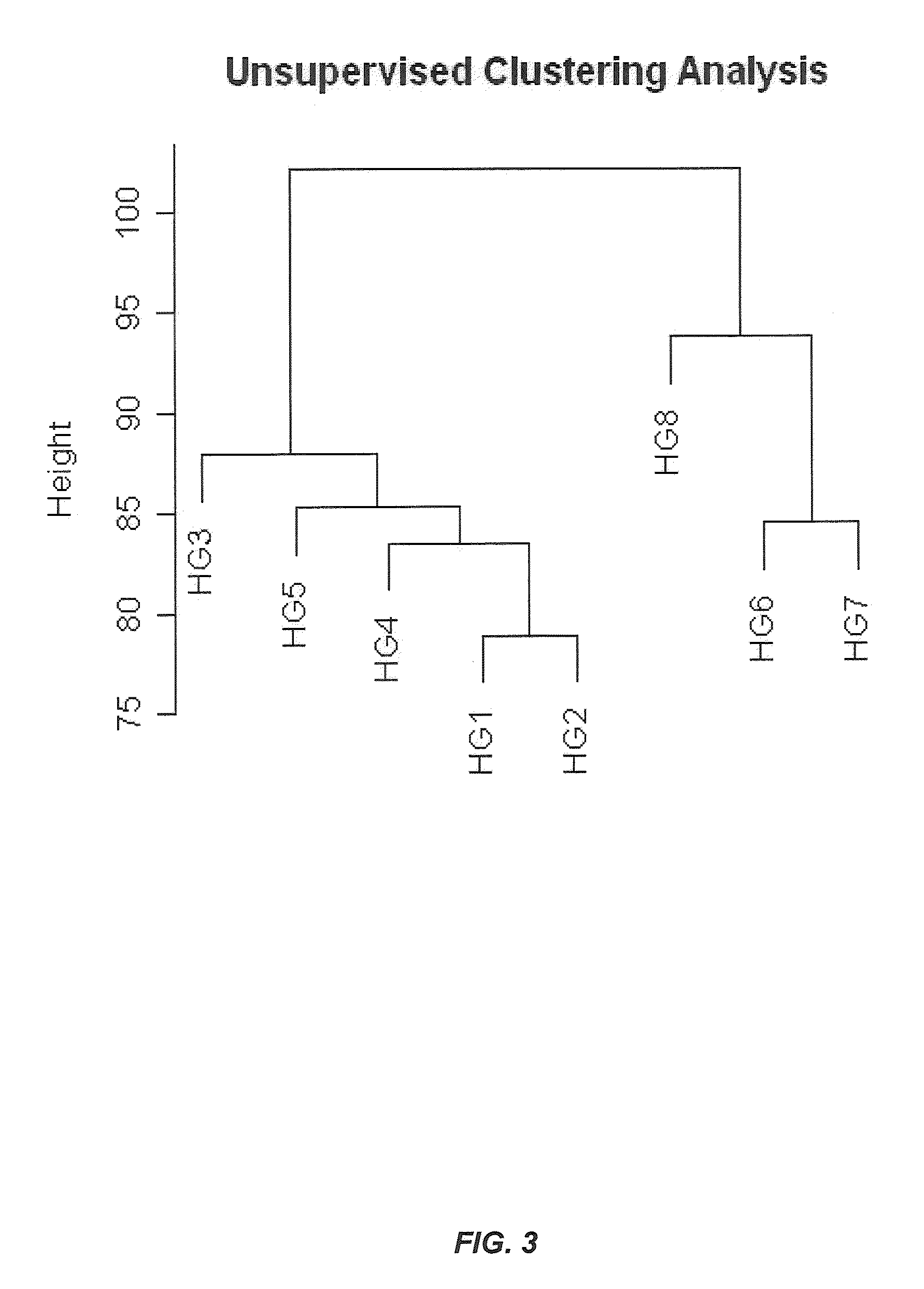Novel genomic biomarkers for irritable bowel syndrome diagnosis
a technology of irritable bowel syndrome and genomic biomarkers, applied in the field of new genomic biomarkers for irritable bowel syndrome diagnosis, can solve the problems of poor cognitive coping strategy, food is forced through the intestines more, gas, bloating, diarrhea, etc., and achieve the effect of accurate classification
- Summary
- Abstract
- Description
- Claims
- Application Information
AI Technical Summary
Benefits of technology
Problems solved by technology
Method used
Image
Examples
example 1
A. Example 1
[0217]The present example demonstrates blood sample collection and RNA isolation there from. Briefly, blood samples were collected from three IBS-D patients, two IBS-C patients, and 3 healthy volunteers. All IBS patients met Rome III criteria and healthy volunteers had no history of IBS or other active co-morbidities. In this case, approximately 2.4 ml of whole blood was collected from each subject. The blood sample was divided into two aliquots, and one was processed according to the leukocyte protocol described above, while the other was collected in the PAXgene system (PreAnalytiX; Hombrechtikon, Switzerland) and processed accordingly.
[0218]Because the principal difference between the two techniques is the inclusion of RNA from the erythrocyte fraction, it was investigated whether an overabundance of hemoglobin mRNA might explain the differences in expression between whole blood and leukocyte generated samples. Additional RNA was isolated from whole blood from the hea...
example 2
B. Example 2
[0219]The present example demonstrates hybridization of the extracted mRNA samples to an oligonucleotide array. For analysis of the IBD and control serum RNA samples, Affymetric human Gene 1.0 ST arrays (Affymatrix, Santa Clara, Calif.) were used. These arrays are an oligonucleotide-probe based gene array chip containing ˜35,000 transcripts, which provides a comprehensive coverage of the whole human genome.
[0220]To prepare the RNA samples for hybridization, eight micrograms of total RNA was used to synthesize cDNA. A T7 promoter sequence introduced during the first strand synthesis was then used to direct cRNA synthesis, which was labeled with biotinylated deoxynucleotide triphosphate, following the manufacturer's protocol (Affymatrix, San Diego, Calif.). After fragmentation, the biotinylated cRNA was hybridized to the gene chip array at 45° C. for 16 h. The chip was washed, stained with phycoerytherin-streptavidin, and scanned with the Gene Chip Scanner 3000. After back...
example 3
C. Example 3
[0238]In order to verify the utility of the IBS markers identified by the microarray experiments, the mRNA expression levels of five identified genes were validated using quantitative reverse transcript-polymerase chain reaction (qRT-PCR) analysis. Briefly, cDNA was synthesized from RNA samples from 12 IBS-M, 22 IBS-C, 12 IBS-D, and 21 control subjects by PCR RNA core kit (Applied Biosystems, Bedford, Mass.). Real time quantitative reverse transcript-polymerase chain reaction (qRT-PCR) with SYBER Green, using gene-specific PCR primers, was performed to verify the microarray data. Five genes (FOXD3, PI4K2A, ACSS2, ASIP, and OR2L8), having Log2 fold changes >2 and FDR adjusted p-values <0.25, were selected and primers used to amplify each gene were generated. Samples were run in triplicate, and PCR was performed by an ABI 7700 thermocycler (Applied Biosystems, Bedford, Mass.). Results of the qRT-PCR analysis is shown in FIG. 8.
PUM
| Property | Measurement | Unit |
|---|---|---|
| Nucleic acid sequence | aaaaa | aaaaa |
| Level | aaaaa | aaaaa |
Abstract
Description
Claims
Application Information
 Login to View More
Login to View More - R&D
- Intellectual Property
- Life Sciences
- Materials
- Tech Scout
- Unparalleled Data Quality
- Higher Quality Content
- 60% Fewer Hallucinations
Browse by: Latest US Patents, China's latest patents, Technical Efficacy Thesaurus, Application Domain, Technology Topic, Popular Technical Reports.
© 2025 PatSnap. All rights reserved.Legal|Privacy policy|Modern Slavery Act Transparency Statement|Sitemap|About US| Contact US: help@patsnap.com



